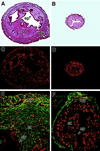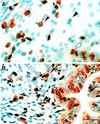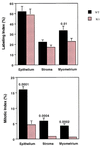Insulin-like growth factor 1 is required for G2 progression in the estradiol-induced mitotic cycle
- PMID: 10077676
- PMCID: PMC15934
- DOI: 10.1073/pnas.96.6.3287
Insulin-like growth factor 1 is required for G2 progression in the estradiol-induced mitotic cycle
Abstract
Insulin-like growth factor 1 (IGF1) has been proposed as a "G1-progression factor" and as a mediator of estradiol's (E2) mitogenic effects on the uterus. To test these hypotheses, we compared E2's mitogenic effects on the uteri of Igf1-targeted gene deletion (null) and wild-type littermate mice. The proportion of uterine cells involved in the cell cycle and G1- and S-phase kinetics were not significantly different in wild-type and Igf1-null mice. However, the appearance of E2-induced mitotic figures and cell number increases were profoundly retarded in Igf1-null uterine tissue. There was a significant increase in nuclear DNA concentration in Igf1-null cells, consistent with a G2 arrest. Interestingly, apoptotic cells were also significantly reduced in abundance, and the normal massive apoptotic response to E2 withdrawal was absent in the Igf1-null uterus. These data show that Igf1 is an essential mediator of E2's mitogenic effects, with a critical role not in G1 progression but in G2 progression.
Figures




References
Publication types
MeSH terms
Substances
LinkOut - more resources
Full Text Sources
Molecular Biology Databases
Miscellaneous

